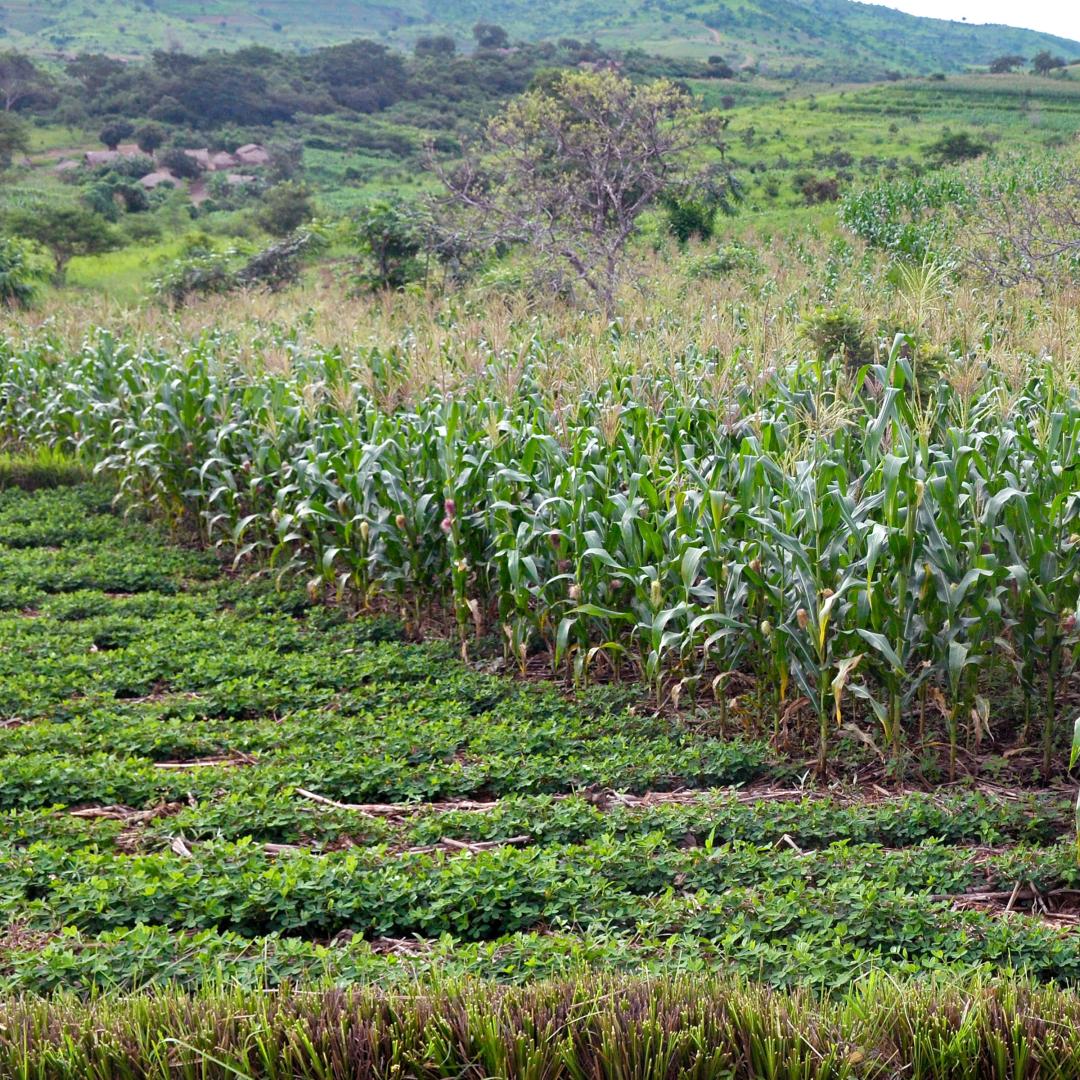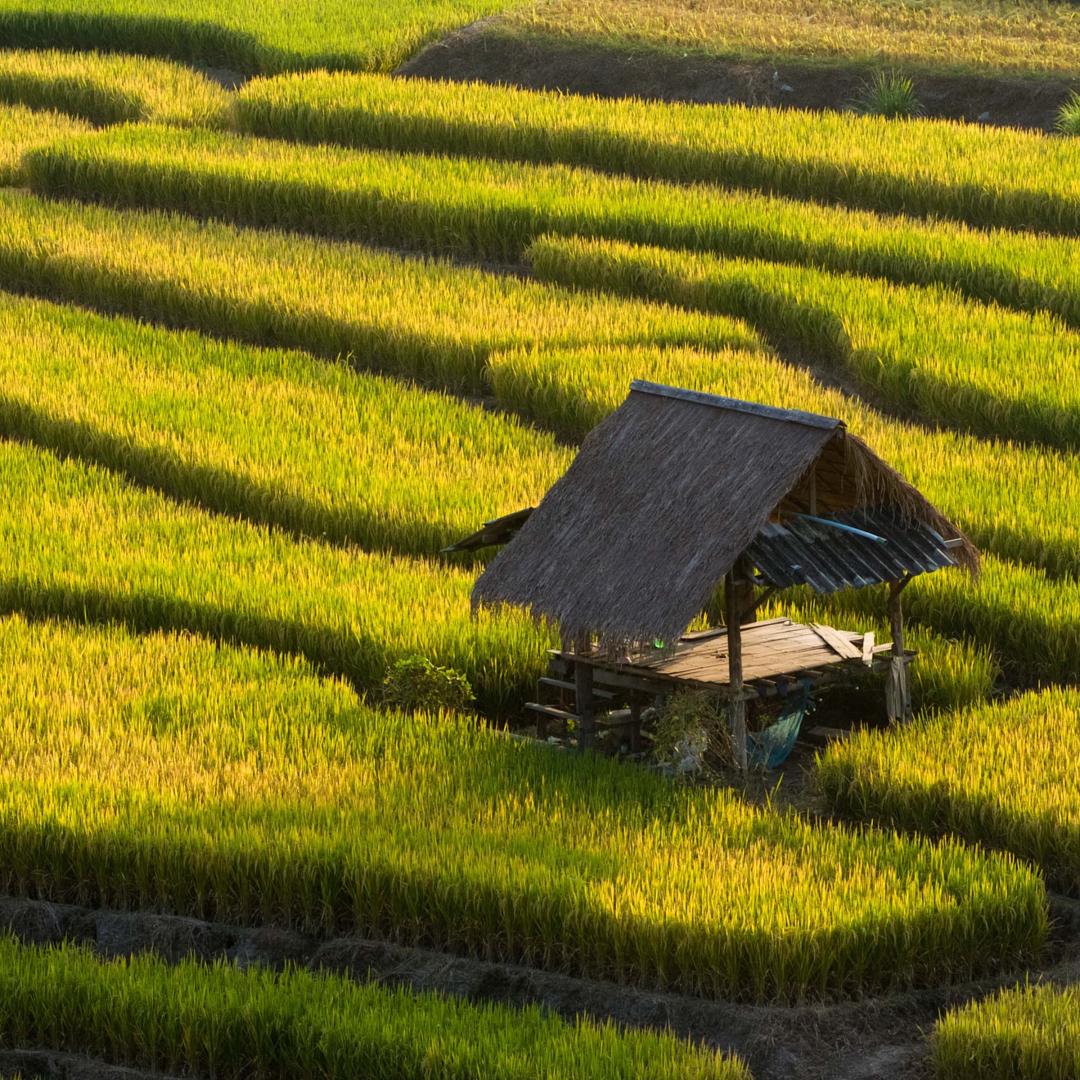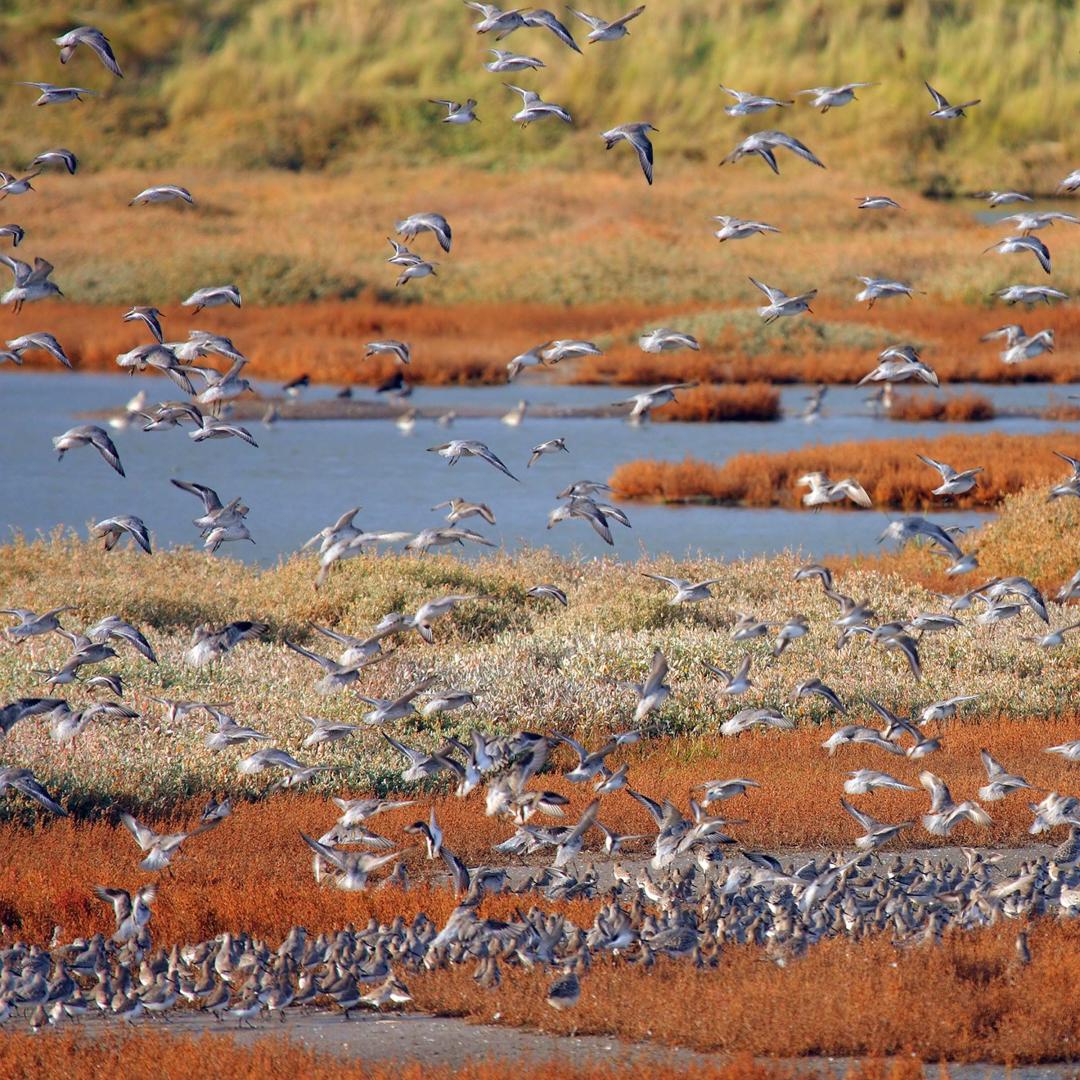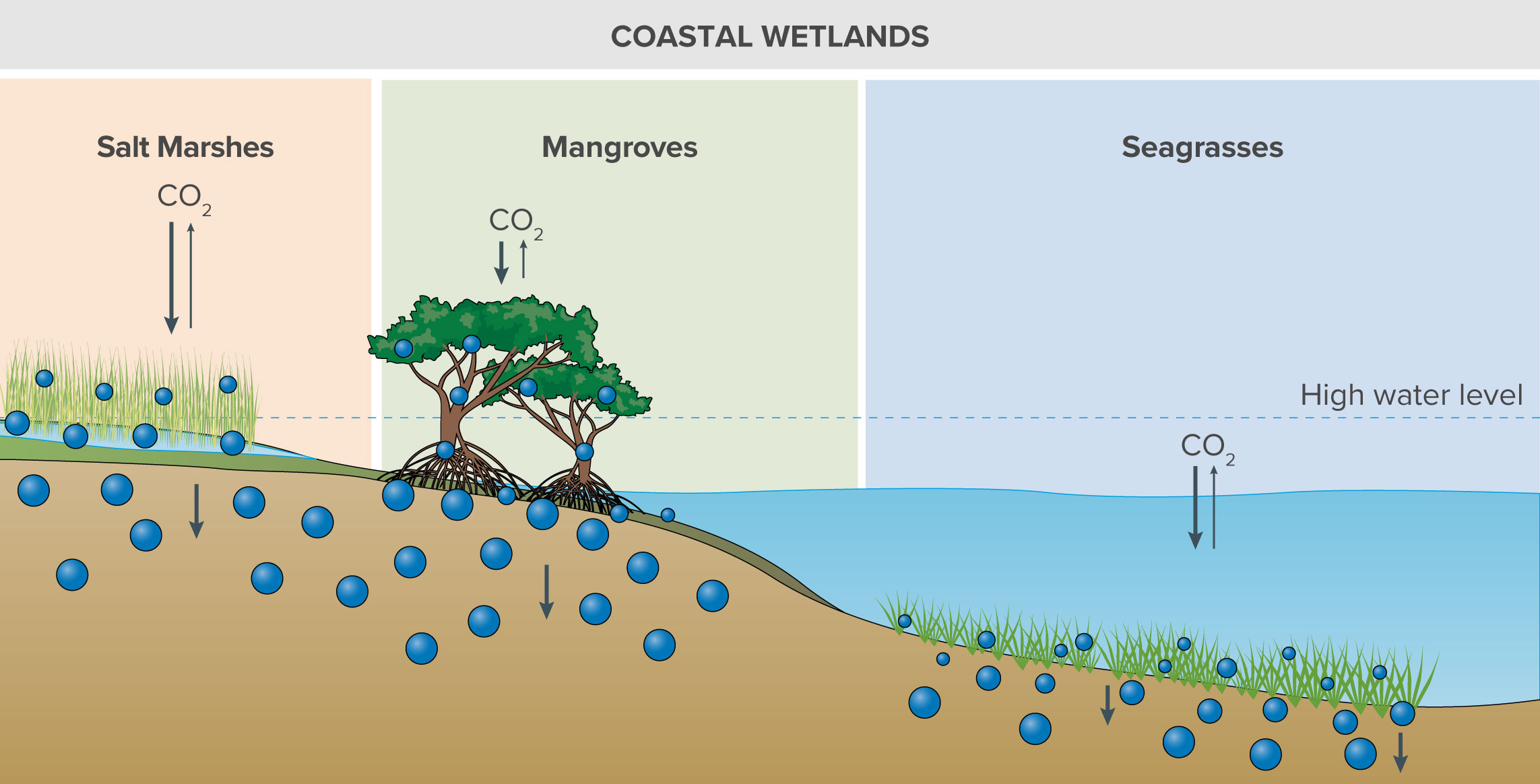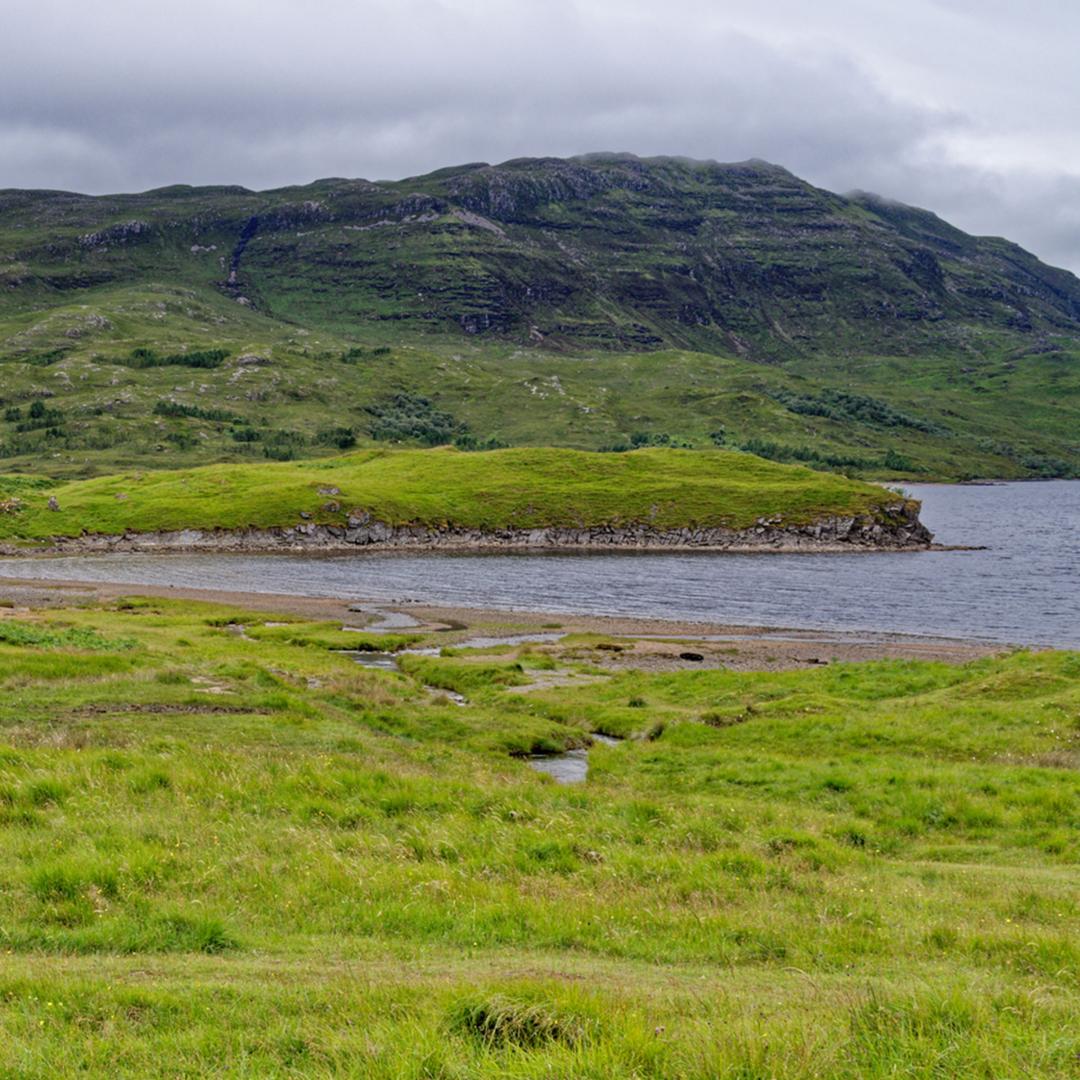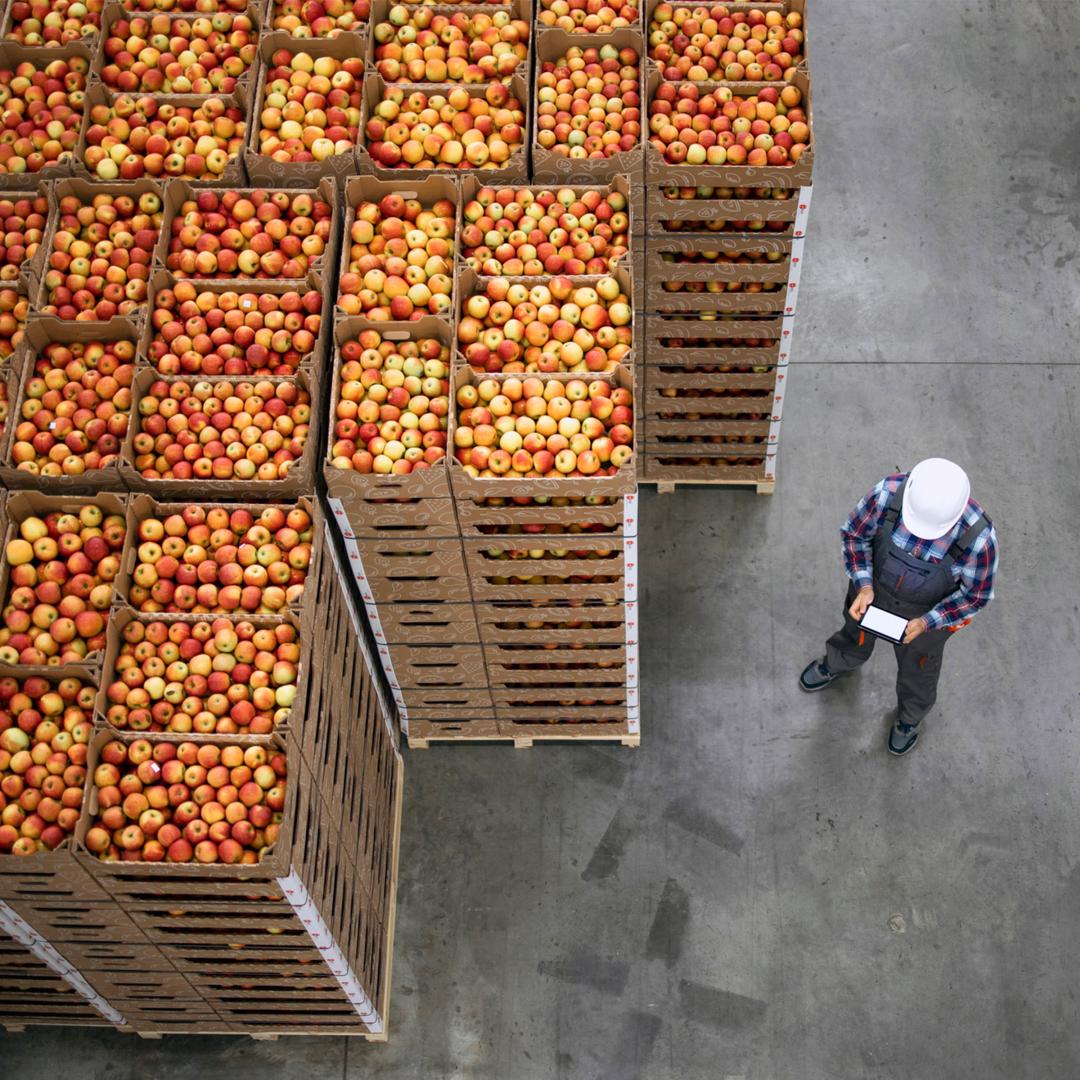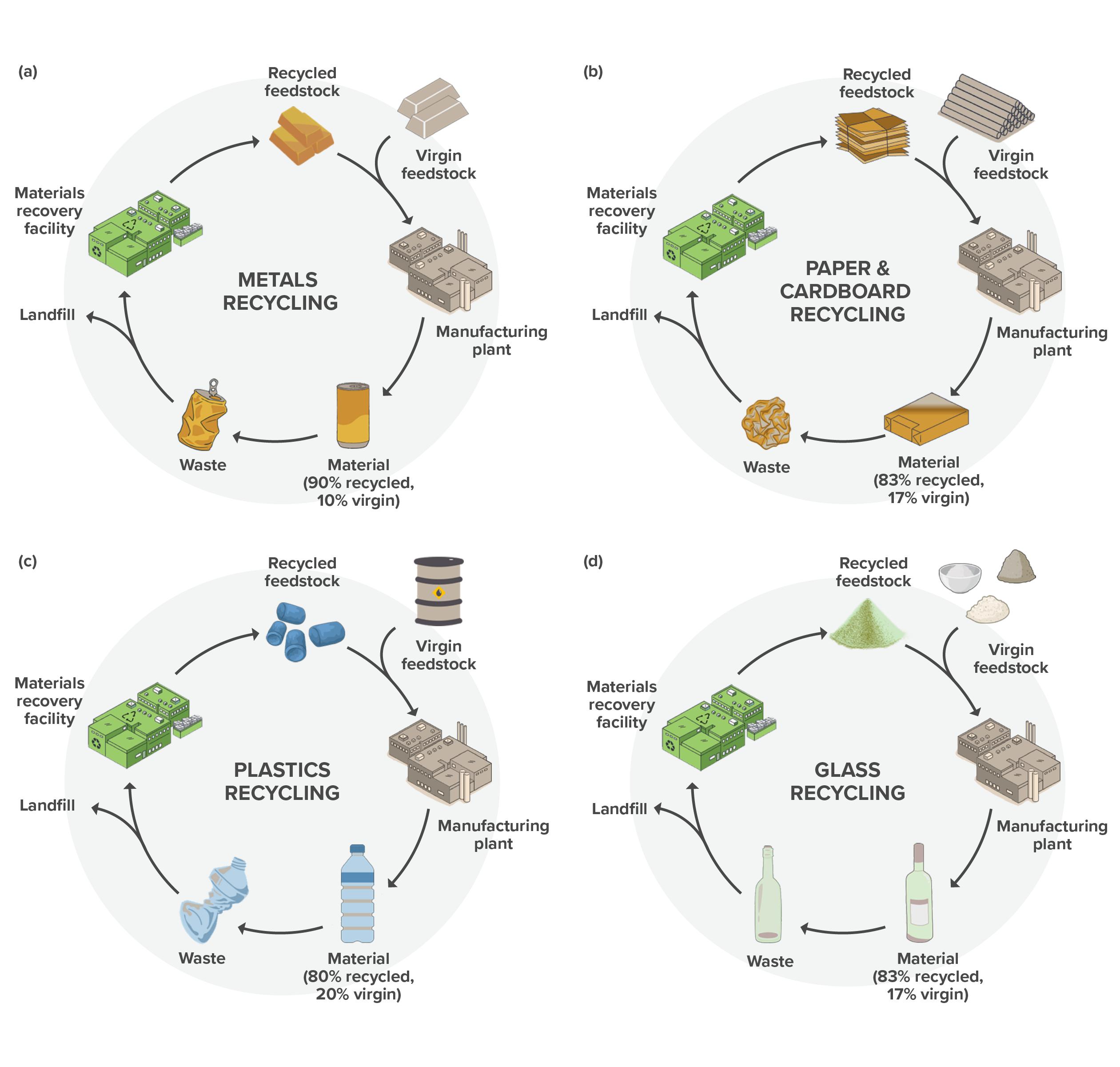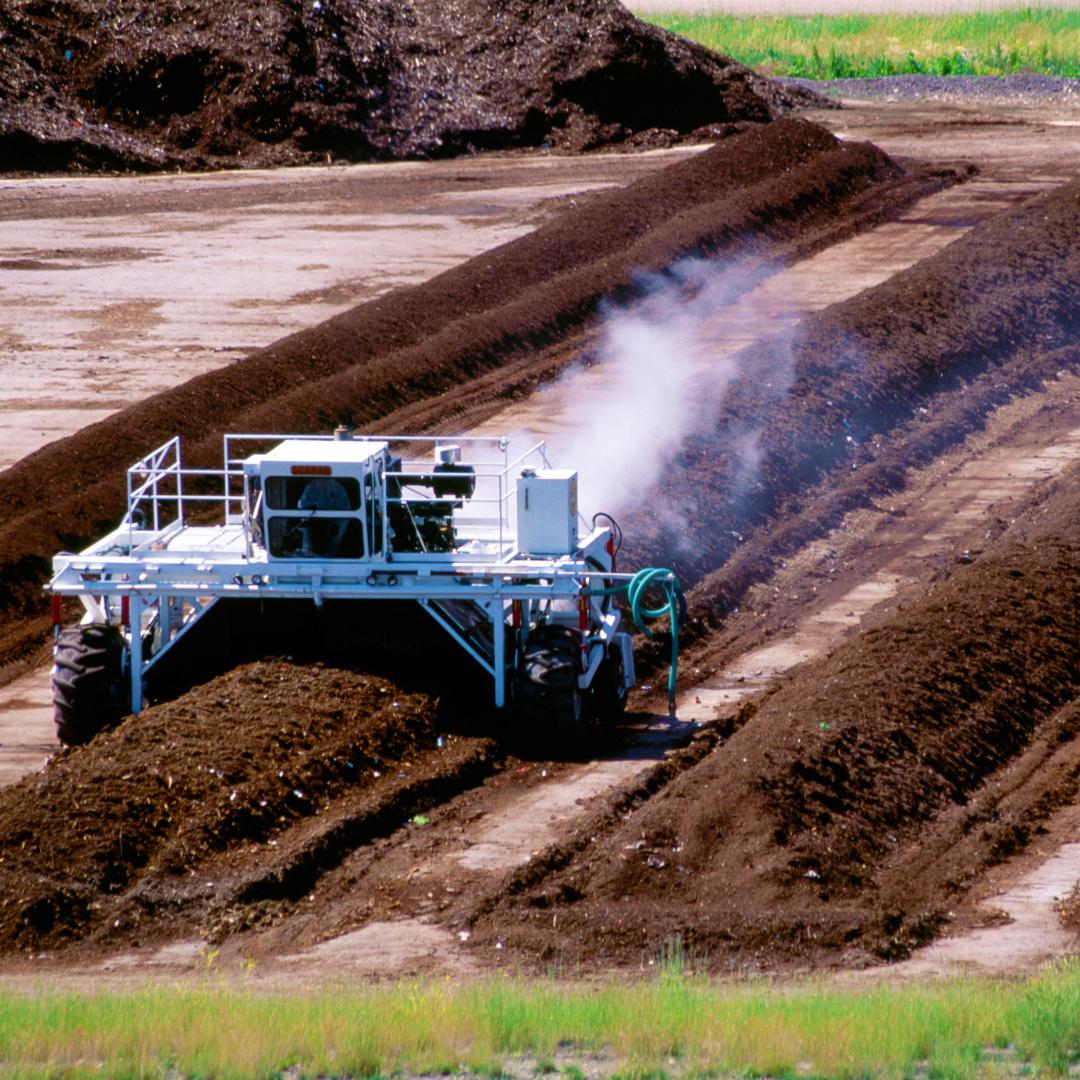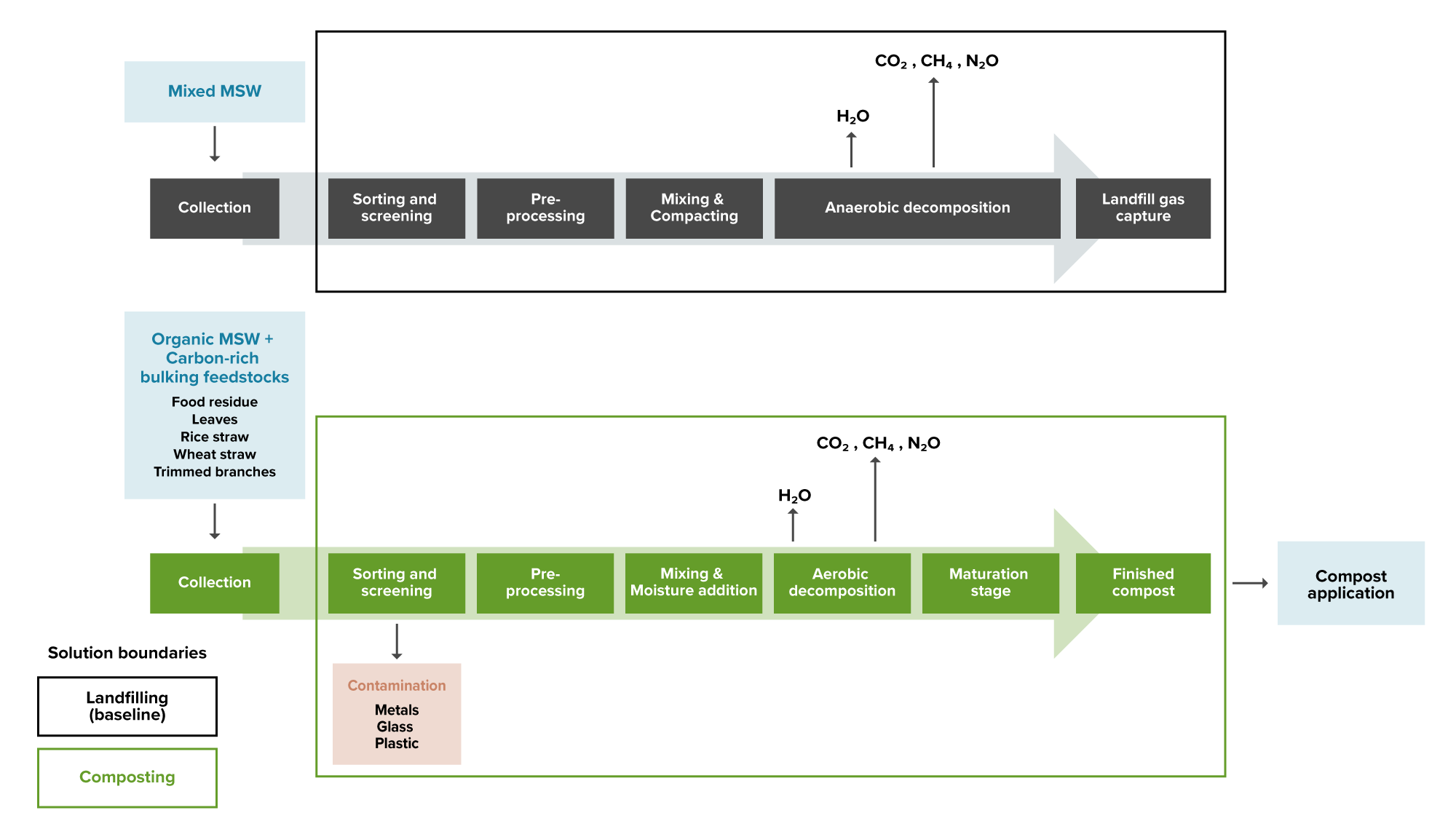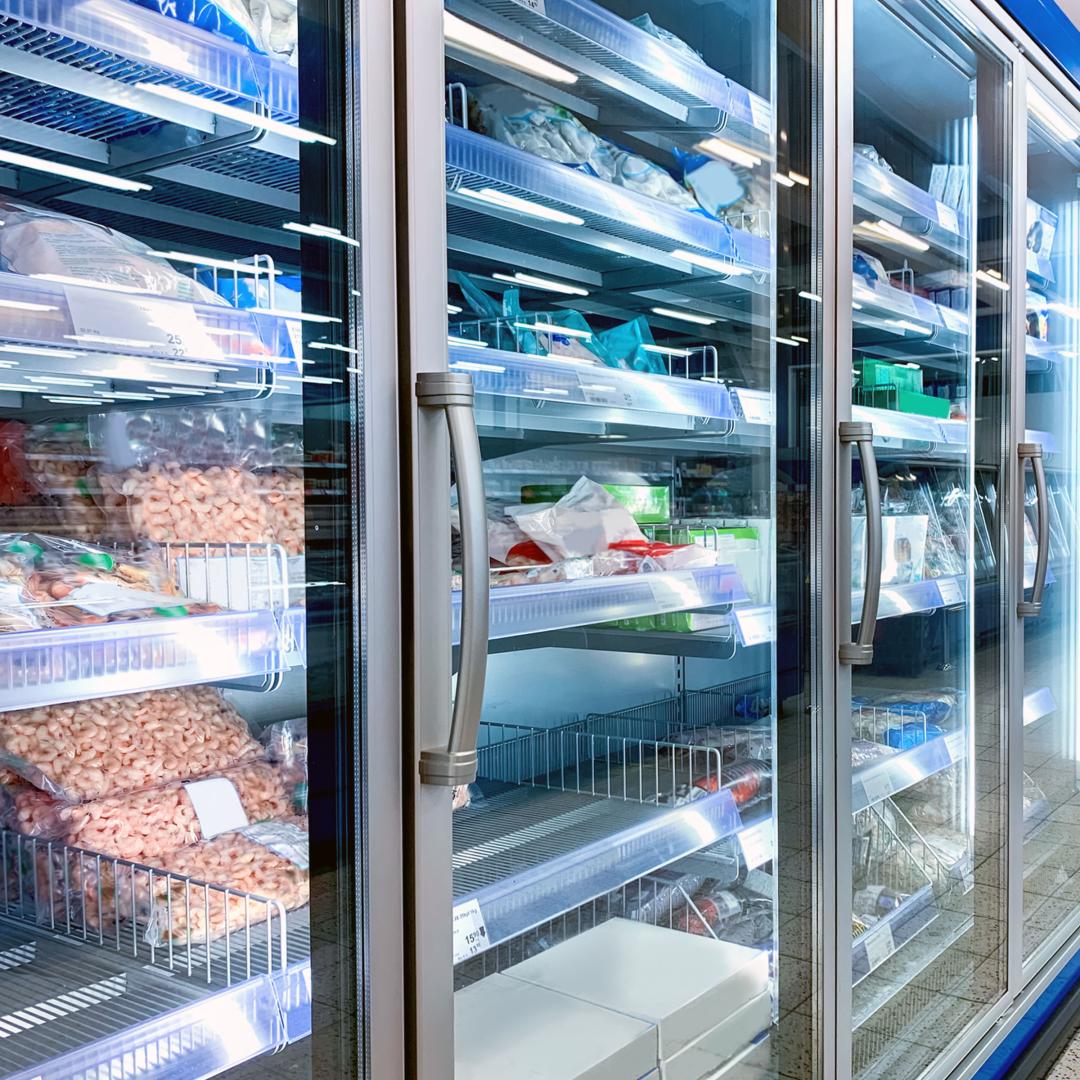Adams, V. M., Iacona, G. D., & Possingham, H. P. (2019). Weighing the benefits of expanding protected areas versus managing existing ones. Nature Sustainability, 2(5), 404–411. Link to source: https://doi.org/10.1038/s41893-019-0275-5
Ahlering, M., Fargione, J., & Parton, W. (2016). Potential carbon dioxide emission reductions from avoided grassland conversion in the northern Great Plains. Ecosphere, 7(12), Article e01625. Link to source: https://doi.org/10.1002/ecs2.1625
Asamoah, E. F., Beaumont, L. J., & Maina, J. M. (2021). Climate and land-use changes reduce the benefits of terrestrial protected areas. Nature Climate Change, 11(12), 1105–1110. Link to source: https://doi.org/10.1038/s41558-021-01223-2
Bai, Y., & Cotrufo, M. F. (2022). Grassland soil carbon sequestration: Current understanding, challenges, and solutions. Science, 377(6606), 603–608. Link to source: https://doi.org/10.1126/science.abo2380
Baragwanath, K., & Bayi, E. (2020). Collective property rights reduce deforestation in the Brazilian Amazon. Proceedings of the National Academy of Sciences, 117(34), 20495–20502. Link to source: https://doi.org/10.1073/pnas.1917874117
Bardgett, R. D., Bullock, J. M., Lavorel, S., Manning, P., Schaffner, U., Ostle, N., Chomel, M., Durigan, G., L. Fry, E., Johnson, D., Lavallee, J. M., Le Provost, G., Luo, S., Png, K., Sankaran, M., Hou, X., Zhou, H., Ma, L., Ren, W., … Shi, H. (2021). Combating global grassland degradation. Nature Reviews Earth & Environment, 2(10), 720–735. Link to source: https://doi.org/10.1038/s43017-021-00207-2
Barger, N. N., Archer, S. R., Campbell, J. L., Huang, C., Morton, J. A., & Knapp, A. K. (2011). Woody plant proliferation in North American drylands: A synthesis of impacts on ecosystem carbon balance. Journal of Geophysical Research: Biogeosciences, 116(G4), Article G00K07. Link to source: https://doi.org/10.1029/2010JG001506
Barnes, M. D., Glew, L., Wyborn, C., & Craigie, I. D. (2018). Prevent perverse outcomes from global protected area policy. Nature Ecology & Evolution, 2(5), 759–762. Link to source: https://doi.org/10.1038/s41559-018-0501-y
Bengtsson, J., Bullock, J. M., Egoh, B., Everson, C., Everson, T., O’Connor, T., O’Farrell, P. J., Smith, H. G., & Lindborg, R. (2019). Grasslands—More important for ecosystem services than you might think. Ecosphere, 10(2), Article e02582. Link to source: https://doi.org/10.1002/ecs2.2582
Berg, A., & McColl, K. A. (2021). No projected global drylands expansion under greenhouse warming. Nature Climate Change, 11(4), 331–337. Link to source: https://doi.org/10.1038/s41558-021-01007-8
Blackman, A., & Veit, P. (2018). Titled Amazon Indigenous communities cut forest carbon emissions. Ecological Economics, 153, 56–67. Link to source: https://doi.org/10.1016/j.ecolecon.2018.06.016
Briggs, J. M., Knapp, A. K., Blair, J. M., Heisler, J. L., Hoch, G. A., Lett, M. S., & McCarron, J. K. (2005). An ecosystem in transition: Causes and consequences of the conversion of mesic grassland to shrubland. BioScience, 55(3), 243–254. Link to source: https://doi.org/10.1641/0006-3568(2005)055[0243:AEITCA]2.0.CO;2
Bruner, A. G., Gullison, R. E., & Balmford, A. (2004). Financial costs and shortfalls of managing and expanding Protected-Area systems in developing countries. BioScience, 54(12), 1119–1126. Link to source: https://doi.org/10.1641/0006-3568(2004)054[1119:FCASOM]2.0.CO;2
Carbutt, C., Henwood, W. D., & Gilfedder, L. A. (2017). Global plight of native temperate grasslands: Going, going, gone? Biodiversity and Conservation, 26(12), 2911–2932. Link to source: https://doi.org/10.1007/s10531-017-1398-5
Chang, J., Ciais, P., Gasser, T., Smith, P., Herrero, M., Havlík, P., Obersteiner, M., Guenet, B., Goll, D. S., Li, W., Naipal, V., Peng, S., Qiu, C., Tian, H., Viovy, N., Yue, C., & Zhu, D. (2021). Climate warming from managed grasslands cancels the cooling effect of carbon sinks in sparsely grazed and natural grasslands. Nature Communications, 12(1), Article 118. Link to source: https://doi.org/10.1038/s41467-020-20406-7
Conant, R. T., Cerri, C. E. P., Osborne, B. B., & Paustian, K. (2017). Grassland management impacts on soil carbon stocks: A new synthesis. Ecological Applications, 27(2), 662–668. Link to source: https://doi.org/10.1002/eap.1473
Craine, J. M., Ocheltree, T. W., Nippert, J. B., Towne, E. G., Skibbe, A. M., Kembel, S. W., & Fargione, J. E. (2013). Global diversity of drought tolerance and grassland climate-change resilience. Nature Climate Change, 3(1), 63–67. Link to source: https://doi.org/10.1038/nclimate1634
Dinerstein, E., Joshi, A. R., Hahn, N. R., Lee, A. T. L., Vynne, C., Burkart, K., Asner, G. P., Beckham, C., Ceballos, G., Cuthbert, R., Dirzo, R., Fankem, O., Hertel, S., Li, B. V., Mellin, H., Pharand-Deschênes, F., Olson, D., Pandav, B., Peres, C. A., … Zolli, A. (2024). Conservation Imperatives: Securing the last unprotected terrestrial sites harboring irreplaceable biodiversity. Frontiers in Science, 2. Link to source: https://doi.org/10.3389/fsci.2024.1349350
ESA CCI (2019). Copernicus Climate Change Service, Climate Data Store: Land cover classification gridded maps from 1992 to present derived from satellite observation. Copernicus Climate Change Service (C3S) Climate Data Store (CDS). Accessed November 2024. Link to source: https://doi.org/10.24381/cds.006f2c9a
Feng, S., & Fu, Q. (2013). Expansion of global drylands under a warming climate. Atmospheric Chemistry and Physics, 13(19), 10081–10094. Link to source: https://doi.org/10.5194/acp-13-10081-2013
Gang, C., Zhou, W., Chen, Y., Wang, Z., Sun, Z., Li, J., Qi, J., & Odeh, I. (2014). Quantitative assessment of the contributions of climate change and human activities on global grassland degradation. Environmental Earth Sciences, 72(11), 4273–4282. Link to source: https://doi.org/10.1007/s12665-014-3322-6
Garnett, S. T., Burgess, N. D., Fa, J. E., Fernández-Llamazares, Á., Molnár, Z., Robinson, C. J., Watson, J. E. M., Zander, K. K., Austin, B., Brondizio, E. S., Collier, N. F., Duncan, T., Ellis, E., Geyle, H., Jackson, M. V., Jonas, H., Malmer, P., McGowan, B., Sivongxay, A., & Leiper, I. (2018). A spatial overview of the global importance of Indigenous lands for conservation. Nature Sustainability, 1(7), 369–374. Link to source: https://doi.org/10.1038/s41893-018-0100-6
Garrett, R. D., Levy, S., Carlson, K. M., Gardner, T. A., Godar, J., Clapp, J., Dauvergne, P., Heilmayr, R., le Polain de Waroux, Y., Ayre, B., Barr, R., Døvre, B., Gibbs, H. K., Hall, S., Lake, S., Milder, J. C., Rausch, L. L., Rivero, R., Rueda, X., … Villoria, N. (2019). Criteria for effective zero-deforestation commitments. Global Environmental Change, 54, 135–147. Link to source: https://doi.org/10.1016/j.gloenvcha.2018.11.003
Goldstein, A., Turner, W. R., Spawn, S. A., Anderson-Teixeira, K. J., Cook-Patton, S., Fargione, J., Gibbs, H. K., Griscom, B., Hewson, J. H., Howard, J. F., Ledezma, J. C., Page, S., Koh, L. P., Rockström, J., Sanderman, J., & Hole, D. G. (2020). Protecting irrecoverable carbon in Earth’s ecosystems. Nature Climate Change, 10(4), 287–295. Link to source: https://doi.org/10.1038/s41558-020-0738-8
Golub, A., Herrera, D., Leslie, G., Pietracci, B., & Lubowski, R. (2021). A real options framework for reducing emissions from deforestation: Reconciling short-term incentives with long-term benefits from conservation and agricultural intensification. Ecosystem Services, 49, Article 101275. Link to source: https://doi.org/10.1016/j.ecoser.2021.101275
Graham, V., Geldmann, J., Adams, V. M., Negret, P. J., Sinovas, P., & Chang, H.-C. (2021). Southeast Asian protected areas are effective in conserving forest cover and forest carbon stocks compared to unprotected areas. Scientific Reports, 11(1), Article 23760. Link to source: https://doi.org/10.1038/s41598-021-03188-w
Grasslands, Rangelands, Savannahs and Shrublands (GRaSS) Alliance. (2023). Valuing Grasslands: Critical ecosystems for nature, climate, and people [Discussion paper]. Link to source: https://www.birdlife.org/wp-content/uploads/2023/12/Valuing-Grasslands-Report-Dec-2023.pdf
Griscom, B. W., Adams, J., Ellis, P. W., Houghton, R. A., Lomax, G., Miteva, D. A., Schlesinger, W. H., Shoch, D., Siikamäki, J. V., Smith, P., Woodbury, P., Zganjar, C., Blackman, A., Campari, J., Conant, R. T., Delgado, C., Elias, P., Gopalakrishna, T., Hamsik, M. R., … Fargione, J. (2017). Natural climate solutions. Proceedings of the National Academy of Sciences, 114(44), 11645–11650. Link to source: https://doi.org/10.1073/pnas.1710465114
Heilmayr, R., Rausch, L. L., Munger, J., & Gibbs, H. K. (2020). Brazil’s Amazon Soy Moratorium reduced deforestation. Nature Food, 1(12), 801–810. Link to source: https://doi.org/10.1038/s43016-020-00194-5
Hoekstra, J. M., Boucher, T. M., Ricketts, T. H., & Roberts, C. (2005). Confronting a biome crisis: Global disparities of habitat loss and protection. Ecology Letters, 8(1), 23–29. Link to source: https://doi.org/10.1111/j.1461-0248.2004.00686.x
Huang, J., Yu, H., Guan, X., Wang, G., & Guo, R. (2016). Accelerated dryland expansion under climate change. Nature Climate Change, 6(2), 166–171. Link to source: https://doi.org/10.1038/nclimate2837
Huang, X., Ibrahim, M. M., Luo, Y., Jiang, L., Chen, J., & Hou, E. (2024). Land use change alters soil organic carbon: Constrained global patterns and predictors. Earth’s Future, 12(5), Article e2023EF004254. Link to source: https://doi.org/10.1029/2023EF004254
IPCC Task Force on National Greenhouse Gas Inventories. (2019). Refinement to the 2006 IPCC Guidelines for National Greenhouse Gas Inventories (Calvo Buendia, E., Tanabe, K., Kranjc, A., Baasansuren, J., Fukuda, M., Ngarize S., Osako, A., Pyrozhenko, Y., Shermanau, P. and Federici, S., Eds.). Intergovernmental Panel on Climate Change. Link to source: https://www.ipcc-nggip.iges.or.jp/public/2019rf/pdf/0_Overview/19R_V0_00_Cover_Foreword_Preface_Dedication.pdf
Isbell, F., Craven, D., Connolly, J., Loreau, M., Schmid, B., Beierkuhnlein, C., Bezemer, T. M., Bonin, C., Bruelheide, H., de Luca, E., Ebeling, A., Griffin, J. N., Guo, Q., Hautier, Y., Hector, A., Jentsch, A., Kreyling, J., Lanta, V., Manning, P., … Eisenhauer, N. (2015). Biodiversity increases the resistance of ecosystem productivity to climate extremes. Nature, 526(7574), 574–577. Link to source: https://doi.org/10.1038/nature15374
Jackson, R. B., Banner, J. L., Jobbágy, E. G., Pockman, W. T., & Wall, D. H. (2002). Ecosystem carbon loss with woody plant invasion of grasslands. Nature, 418(6898), 623–626. Link to source: https://doi.org/10.1038/nature00910
Jones, K. R., Venter, O., Fuller, R. A., Allan, J. R., Maxwell, S. L., Negret, P. J., & Watson, J. E. M. (2018). One-third of global protected land is under intense human pressure. Science, 360(6390), 788–791. Link to source: https://doi.org/10.1126/science.aap9565
Kachler, J., Benra, F., Bolliger, R., Isaac, R., Bonn, A., & Felipe-Lucia, M. R. (2023). Can we have it all? The role of grassland conservation in supporting forage production and plant diversity. Landscape Ecology, 38(12), 4451–4465. Link to source: https://doi.org/10.1007/s10980-023-01729-4
Kemp, D. R., Guodong, H., Xiangyang, H., Michalk, D. L., Fujiang, H., Jianping, W., & Yingjun, Z. (2013). Innovative grassland management systems for environmental and livelihood benefits. Proceedings of the National Academy of Sciences, 110(21), 8369–8374. Link to source: https://doi.org/10.1073/pnas.1208063110
Kim, J. H., Jobbágy, E. G., & Jackson, R. B. (2016). Trade-offs in water and carbon ecosystem services with land-use changes in grasslands. Ecological Applications, 26(6), 1633–1644. Link to source: https://doi.org/10.1890/15-0863.1
Knapp, A. K., Chen, A., Griffin-Nolan, R. J., Baur, L. E., Carroll, C. J. W., Gray, J. E., Hoffman, A. M., Li, X., Post, A. K., Slette, I. J., Collins, S. L., Luo, Y., & Smith, M. D. (2020). Resolving the Dust Bowl paradox of grassland responses to extreme drought. Proceedings of the National Academy of Sciences, 117(36), 22249–22255. Link to source: https://doi.org/10.1073/pnas.1922030117
Lambin, E. F., Gibbs, H. K., Heilmayr, R., Carlson, K. M., Fleck, L. C., Garrett, R. D., le Polain de Waroux, Y., McDermott, C. L., McLaughlin, D., Newton, P., Nolte, C., Pacheco, P., Rausch, L. L., Streck, C., Thorlakson, T., & Walker, N. F. (2018). The role of supply-chain initiatives in reducing deforestation. Nature Climate Change, 8(2), 109–116. Link to source: https://doi.org/10.1038/s41558-017-0061-1
Lefcheck, J. S., Byrnes, J. E. K., Isbell, F., Gamfeldt, L., Griffin, J. N., Eisenhauer, N., Hensel, M. J. S., Hector, A., Cardinale, B. J., & Duffy, J. E. (2015). Biodiversity enhances ecosystem multifunctionality across trophic levels and habitats. Nature Communications, 6(1), Article 6936. Link to source: https://doi.org/10.1038/ncomms7936
Levy, S. A., Cammelli, F., Munger, J., Gibbs, H. K., & Garrett, R. D. (2023). Deforestation in the Brazilian Amazon could be halved by scaling up the implementation of zero-deforestation cattle commitments. Global Environmental Change, 80, Article 102671. Link to source: https://doi.org/10.1016/j.gloenvcha.2023.102671
Li, G., Fang, C., Watson, J. E. M., Sun, S., Qi, W., Wang, Z., & Liu, J. (2024). Mixed effectiveness of global protected areas in resisting habitat loss. Nature Communications, 15(1), Article 8389. Link to source: https://doi.org/10.1038/s41467-024-52693-9
Li, J., Huang, L., Cao, W., Wang, J., Fan, J., Xu, X., & Tian, H. (2023). Benefits, potential and risks of China’s grassland ecosystem conservation and restoration. Science of The Total Environment, 905, Article 167413. Link to source: https://doi.org/10.1016/j.scitotenv.2023.167413
Liechti, K., & Biber, J.-P. (2016). Pastoralism in Europe: Characteristics and challenges of highland-lowland transhumance. Revue Scientifique Et Technique (International Office of Epizootics), 35(2), 561–575. Link to source: https://doi.org/10.20506/rst.35.2.2541
Macdonald, K., Diprose, R., Grabs, J., Schleifer, P., Alger, J., Bahruddin, Brandao, J., Cashore, B., Chandra, A., Cisneros, P., Delgado, D., Garrett, R., & Hopkinson, W. (2024). Jurisdictional approaches to sustainable agro-commodity governance: The state of knowledge and future research directions. Earth System Governance, 22, Article 100227. Link to source: https://doi.org/10.1016/j.esg.2024.100227
Marin, F. R., Zanon, A. J., Monzon, J. P., Andrade, J. F., Silva, E. H. F. M., Richter, G. L., Antolin, L. A. S., Ribeiro, B. S. M. R., Ribas, G. G., Battisti, R., Heinemann, A. B., & Grassini, P. (2022). Protecting the Amazon forest and reducing global warming via agricultural intensification. Nature Sustainability, 5, 1018–1026. Link to source: https://doi.org/10.1038/s41893-022-00968-8
McNicol, I. M., Keane, A., Burgess, N. D., Bowers, S. J., Mitchard, E. T. A., & Ryan, C. M. (2023). Protected areas reduce deforestation and degradation and enhance woody growth across African woodlands. Communications Earth & Environment, 4(1), Article 392. Link to source: https://doi.org/10.1038/s43247-023-01053-4
Meng, Z., Dong, J., Ellis, E. C., Metternicht, G., Qin, Y., Song, X.-P., Löfqvist, S., Garrett, R. D., Jia, X., & Xiao, X. (2023). Post-2020 biodiversity framework challenged by cropland expansion in protected areas. Nature Sustainability, 6(7), 758–768. Link to source: https://doi.org/10.1038/s41893-023-01093-w
Michalk, D. L., Kemp, D. R., Badgery, W. B., Wu, J., Zhang, Y., & Thomassin, P. J. (2019). Sustainability and future food security—A global perspective for livestock production. Land Degradation & Development, 30(5), 561–573. Link to source: https://doi.org/10.1002/ldr.3217
Nabuurs, G.-J., Mrabet, R., Hatab, A. A., Bustamante, M., Clark, H., Havlík, P., House, J. I., Mbow, C., Ninan, K. N., Popp, A., Roe, S., Sohngen, B., & Towprayoon, S. (2022). Agriculture, forestry and other land uses (AFOLU). In P. R. Shukla, J. Skea, R. Slade, A. Al Khourdajie, R. van Diemen, D. McCollum, M. Pathak, S. Some, P. Vyas, R. Fradera, M. Belkacemi, A. Hasija, G. Lisboa, S. Luz, & J. Malley (Eds.), Climate change 2022: Mitigation of climate change. Contribution of working group III to the sixth assessment report of the intergovernmental panel on climate change (pp. 747–860). Cambridge University Press. Link to source: https://doi.org/10.1017/9781009157926.009
Nugent, D. T., Baker-Gabb, D. J., Green, P., Ostendorf, B., Dawlings, F., Clarke, R. H., & Morgan, J. W. (2022). Multi-scale habitat selection by a cryptic, critically endangered grassland bird—The Plains-wanderer (Pedionomus torquatus): Implications for habitat management and conservation. Austral Ecology, 47(3), 698–712. Link to source: https://doi.org/10.1111/aec.13157
Olson, D. M., Dinerstein, E., Wikramanayake, E. D., Burgess, N. D., Powell, G. V. N., Underwood, E. C., D’amico, J. A., Itoua, I., Strand, H. E., Morrison, J. C., Loucks, C. J., Allnutt, T. F., Ricketts, T. H., Kura, Y., Lamoreux, J. F., Wettengel, W. W., Hedao, P., & Kassem, K. R. (2001). Terrestrial ecoregions of the world: A new map of life on Earth: A new global map of terrestrial ecoregions provides an innovative tool for conserving biodiversity. BioScience, 51(11), 933–938. Link to source: https://doi.org/10.1641/0006-3568(2001)051[0933:TEOTWA]2.0.CO;2
Parente, L., Sloat, L., Mesquita, V., Consoli, D., Stanimirova, R., Hengl, T., Bonannella, C., Teles, N., Wheeler, I., Hunter, M., Ehrmann, S., Ferreira, L., Mattos, A. P., Oliveira, B., Meyer, C., Şahin, M., Witjes, M., Fritz, S., Malek, Z., & Stolle, F. (2024a). Annual 30-m maps of global grassland class and extent (2000–2022) based on spatiotemporal Machine Learning. Scientific Data, 11(1), Article 1303. Link to source: https://doi.org/10.1038/s41597-024-04139-6
Parente, L., Sloat, L., Mesquita, V., Consoli, D., Stanimirova, R., Hengl, T., Bonannella, C., Teles, N., Wheeler, I., Hunter, M., Ehrmann, S., Ferreira, L., Mattos, A. P., Oliveira, B., Meyer, C., Şahin, M., Witjes, M., Fritz, S., Malek, Ž., & Stolle, F. (2024b). Global Pasture Watch—Annual grassland class and extent maps at 30-m spatial resolution (2000—2022) (Version v1) [Data set]. Zenodo. Link to source: https://doi.org/10.5281/zenodo.13890417
Pelser, A., Redelinghuys, N., & Kernan, A.-L. (2015). Protected Areas and ecosystem services—Integrating grassland conservation with human well-being in South Africa. In Biodiversity in Ecosystems—Linking Structure and Function. IntechOpen. Link to source: https://doi.org/10.5772/59015
Petermann, J. S., & Buzhdygan, O. Y. (2021). Grassland biodiversity. Current Biology, 31(19), R1195–R1201. Link to source: https://doi.org/10.1016/j.cub.2021.06.060
Poeplau, C. (2021). Grassland soil organic carbon stocks along management intensity and warming gradients. Grass and Forage Science, 76(2), 186–195. Link to source: https://doi.org/10.1111/gfs.12537
Poggio, L., de Sousa, L. M., Batjes, N. H., Heuvelink, G. B. M., Kempen, B., Ribeiro, E., & Rossiter, D. (2021). SoilGrids 2.0: Producing soil information for the globe with quantified spatial uncertainty. SOIL, 7(1), 217–240. Link to source: https://doi.org/10.5194/soil-7-217-2021
Ratajczak, Z., Nippert, J. B., & Collins, S. L. (2012). Woody encroachment decreases diversity across North American grasslands and savannas. Ecology, 93(4), 697–703. Link to source: https://doi.org/10.1890/11-1199.1
Resare Sahlin, K., Gordon, L. J., Lindborg, R., Piipponen, J., Van Rysselberge, P., Rouet-Leduc, J., & Röös, E. (2024). An exploration of biodiversity limits to grazing ruminant milk and meat production. Nature Sustainability, 7(9), 1160–1170. Link to source: https://doi.org/10.1038/s41893-024-01398-4
Saura, S., Bertzky, B., Bastin, L., Battistella, L., Mandrici, A., & Dubois, G. (2019). Global trends in protected area connectivity from 2010 to 2018. Biological Conservation, 238, Article 108183. Link to source: https://doi.org/10.1016/j.biocon.2019.07.028
Sloat, L., Balehegn, M., & Johnson, P. (2025, May 2). Grasslands Are Some of Earth’s Most Underrated Ecosystems. World Resources Institute. Link to source: https://www.wri.org/insights/grassland-benefits
Smith, M. D., Wilkins, K. D., Holdrege, M. C., Wilfahrt, P., Collins, S. L., Knapp, A. K., Sala, O. E., Dukes, J. S., Phillips, R. P., Yahdjian, L., Gherardi, L. A., Ohlert, T., Beier, C., Fraser, L. H., Jentsch, A., Loik, M. E., Maestre, F. T., Power, S. A., Yu, Q., … Zuo, X. (2024). Extreme drought impacts have been underestimated in grasslands and shrublands globally. Proceedings of the National Academy of Sciences, 121(4), Article e2309881120. Link to source: https://doi.org/10.1073/pnas.2309881120
Spawn, S. A., Sullivan, C. C., Lark, T. J., & Gibbs, H. K. (2020). Harmonized global maps of above and belowground biomass carbon density in the year 2010. Scientific Data, 7(1), Article 112. Link to source: https://doi.org/10.1038/s41597-020-0444-4
Stanley, P. L., Wilson, C., Patterson, E., Machmuller, M. B., & Cotrufo, M. F. (2024). Ruminating on soil carbon: Applying current understanding to inform grazing management. Global Change Biology, 30(3), Article e17223. Link to source: https://doi.org/10.1111/gcb.17223
Su, X., Han, W., Liu, G., Zhang, Y., & Lu, H. (2019). Substantial gaps between the protection of biodiversity hotspots in alpine grasslands and the effectiveness of protected areas on the Qinghai-Tibetan Plateau, China. Agriculture, Ecosystems & Environment, 278, 15–23. Link to source: https://doi.org/10.1016/j.agee.2019.03.013
Suttie, J. M., Reynolds, S. G., & Batello, C. (Eds.). (2005). Grasslands of the world (Vol. 34). Food and Agriculture Organization of the United Nations. Link to source: https://www.fao.org/4/y8344e/y8344e00.htm
Sze, J. S., Carrasco, L. R., Childs, D., & Edwards, D. P. (2021). Reduced deforestation and degradation in Indigenous Lands pan-tropically. Nature Sustainability, 5(2), 123–130. Link to source: https://doi.org/10.1038/s41893-021-00815-2
United Nations Environment Programme World Conservation Monitoring Centre, & International Union for Conservation of Nature. (2024). Protected planet: The world database on protected areas (WDPA) and world database on other effective area-based conservation measures (WD-OECM) [Data set]. Retrieved November 2024 from Link to source: https://www.protectedplanet.net
Vijay, V., Fisher, J. R. B., & Armsworth, P. R. (2022). Co-benefits for terrestrial biodiversity and ecosystem services available from contrasting land protection policies in the contiguous United States. Conservation Letters, 15(5), Article e12907. Link to source: https://doi.org/10.1111/conl.12907
Villoria, N., Garrett, R., Gollnow, F., & Carlson, K. (2022). Leakage does not fully offset soy supply-chain efforts to reduce deforestation in Brazil. Nature Communications, 13(1), Article 5476. Link to source: https://doi.org/10.1038/s41467-022-33213-z
Visconti, P., Butchart, S. H. M., Brooks, T. M., Langhammer, P. F., Marnewick, D., Vergara, S., Yanosky, A., & Watson, J. E. M. (2019). Protected area targets post-2020. Science, 364(6437), 239–241. Link to source: https://doi.org/10.1126/science.aav6886
Wade, C. M., Austin, K. G., Cajka, J., Lapidus, D., Everett, K. H., Galperin, D., Maynard, R., & Sobel, A. (2020). What is threatening forests in Protected Areas? A global assessment of deforestation in Protected Areas, 2001–2018. Forests, 11(5), Article 539. Link to source: https://doi.org/10.3390/f11050539
Waldron, A., Adams, V., Allan, J., Arnell, A., Asner, G., Atkinson, S., Baccini, A., Baillie, J. E. M., Balmford, A., Beau, J. A., Brander, L., Brondizio, E., Bruner, A., Burgess, N., Burkart, K., Butchart, S., Button, R., Carrasco, R., Cheung, W., … Zhang, Y. P. (2020). Protecting 30% of the planet for nature: Costs, benefits and economic implications [Working paper]. International Institute for Applied Systems Analysis. Link to source: https://pure.iiasa.ac.at/id/eprint/16560/1/Waldron_Report_FINAL_sml.pdf
Ward, M., Saura, S., Williams, B., Ramírez-Delgado, J. P., Arafeh-Dalmau, N., Allan, J. R., Venter, O., Dubois, G., & Watson, J. E. M. (2020). Just ten percent of the global terrestrial protected area network is structurally connected via intact land. Nature Communications, 11(1), Article 4563. Link to source: https://doi.org/10.1038/s41467-020-18457-x
Watson, J. E. M., Dudley, N., Segan, D. B., & Hockings, M. (2014). The performance and potential of protected areas. Nature, 515(7525), 67–73. Link to source: https://doi.org/10.1038/nature13947
West, T. A. P., Wunder, S., Sills, E. O., Börner, J., Rifai, S. W., Neidermeier, A. N., Frey, G. P., & Kontoleon, A. (2023). Action needed to make carbon offsets from forest conservation work for climate change mitigation. Science, 381(6660), 873–877. Link to source: https://doi.org/10.1126/science.ade3535
Williams, M., Reay, D., & Smith, P. (2023). Avoiding emissions versus creating sinks—Effectiveness and attractiveness to climate finance. Global Change Biology, 29(8), 2046–2049. https://doi.org/10.1111/gcb.16598
Wolf, C., Levi, T., Ripple, W. J., Zárrate-Charry, D. A., & Betts, M. G. (2021). A forest loss report card for the world’s protected areas. Nature Ecology & Evolution, 5(4), 520–529. Link to source: https://doi.org/10.1038/s41559-021-01389-0
Yao, J., Liu, H., Huang, J., Gao, Z., Wang, G., Li, D., Yu, H., & Chen, X. (2020). Accelerated dryland expansion regulates future variability in dryland gross primary production. Nature Communications, 11(1), Article 1665. Link to source: https://doi.org/10.1038/s41467-020-15515-2
Yu, Q., Xu, C., Wu, H., Ke, Y., Zuo, X., Luo, W., Ren, H., Gu, Q., Wang, H., Ma, W., Knapp, A. K., Collins, S. L., Rudgers, J. A., Luo, Y., Hautier, Y., Wang, C., Wang, Z., Jiang, Y., Han, G., … Han, X. (2025). Contrasting drought sensitivity of Eurasian and North American grasslands. Nature, 639(8053), 114–118. Link to source: https://doi.org/10.1038/s41586-024-08478-7
Zhu, K., Chiariello, N. R., Tobeck, T., Fukami, T., & Field, C. B. (2016). Nonlinear, interacting responses to climate limit grassland production under global change. Proceedings of the National Academy of Sciences, 113(38), 10589–10594. Link to source: https://doi.org/10.1073/pnas.1606734113
Zhu, K., Song, Y., Lesage, J. C., Luong, J. C., Bartolome, J. W., Chiariello, N. R., Dudney, J., Field, C. B., Hallett, L. M., Hammond, M., Harrison, S. P., Hayes, G. F., Hobbs, R. J., Holl, K. D., Hopkinson, P., Larios, L., Loik, M. E., & Prugh, L. R. (2024). Rapid shifts in grassland communities driven by climate change. Nature Ecology & Evolution, 8(12), 2252–2264. Link to source: https://doi.org/10.1038/s41559-024-02552-z

